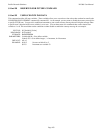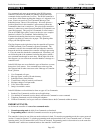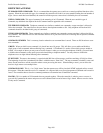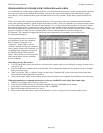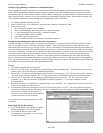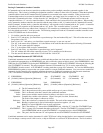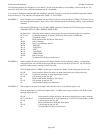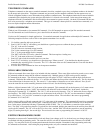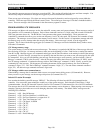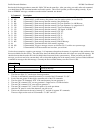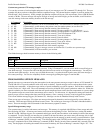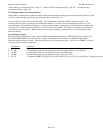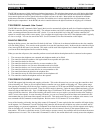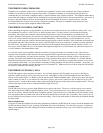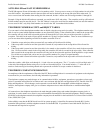
Pacific Research Solutions RI-300e User Manual
Page 110
SECTION 14 MESSAGES, SPEECH and CW
The controller supports two types of messages, speech and CW. This section will outline both types and show examples. You
should always keep in mind that all messages are triggered by some event within the controller.
There are two types of messages. First, there are messages that stand by themselves and are triggered by events within the
controller. These messages include the ID and courtesy tones. The second type of message is one that is imbedded within a
macro. These are messages with S-Commands in the same memory segment or macro.
PROGRAMMING CW MESSAGES
CW messages are Morse code messages such as the station ID, courtesy tones and system telemetry. These messages consist of
tone generator or CW commands in sequence. Each of these commands consists of a 3-digit value and are used to tell the RI-
300’s tone generator what to do. The RI-300 has 2 tone generators that operate simultaneously. These generators are
controlled by commands that allow you to set the tone frequency, level, CW code speed, CW character, and a number of beeps
and pauses. The messages are stored in the same memory area as macros. For this reason, it is important to manage and track
the memory usage as not to damage other data stored in the memory. Once a message is stored, it can be triggered for
playback. This is done with the message triggers (S-Command 32). Messages can also be imbedded directly inside a macro,
with other S-Commands.
CW Message memory usage
The system memory is used for both macros and messages. The memory is organized with 999 lines of data storage with each
line consisting of 24 digits. All message and macros must start at the beginning of a line. Each line has a starting line number
from 001 to 999. Message triggers, user commands and triggers use the start line address as the starting location of the message
or command. To edit a message, you must first set a pointer to the start line where you want to start your message. Do this with
S-Command 63. Next, you can start building your message. For the message to work correctly, you must include a “Start of
Message” command (31 001) as the first entry. After the first entry, the entries that follow are of the form: (31 XXX), and are
the CW message commands. Complete the message with an “End of Message” command: (31 002). Finally, an end of data
command (64) is the last entry. For the purpose of tracking the amount of data stored in memory, the “Start of Message”
consumes 2 digits (“31”). The “End of Message” command consumes 1 digit (“C”). The end of data command consumes 1
digit (“D”). All other message commands consume 3 digits each.
CW Messages within a user command macro
When building a message that is contained within a macro, use normal macro editing process (S-Command 64). However,
when you arrive at your message, use the message edit process (S-Command 30 or 31).
Default CW station ID example
Lets examine the default system ID message “HELLO”. The following will show how this ID is programmed into the
controller. You can use this same technique to modify any of the system messages. Each character of the ID has a 3-digit
command number. See the CW data table located in section 12 S-Command 31 of this manual for a list of all CW commands.
The message data for all CW commands are located in the same memory area as the macros. When entering a new message or
changing a message, please take care to avoid damaging other data in the memory. The default “Hello” message uses the
following CW commands:
Character 1 = 001 Start Of Message
Character 2 = 036 Set Tone Generator 1 to 400 Hz tone
Character 3 = 079 Set Tone Generator 1 to output level 15
Character 4 = 118 Turn Tone Generator 2 off
Character 5 = 212 CW Speed, 16 WPM
Character 6 = 239 CW “H”
Character 7 = 236 CW “E”
Character 8 = 243 CW “L”
Character 9 = 243 CW “L”
Character 10 = 246 CW “O”
Character 11 = 002 End Of Message



